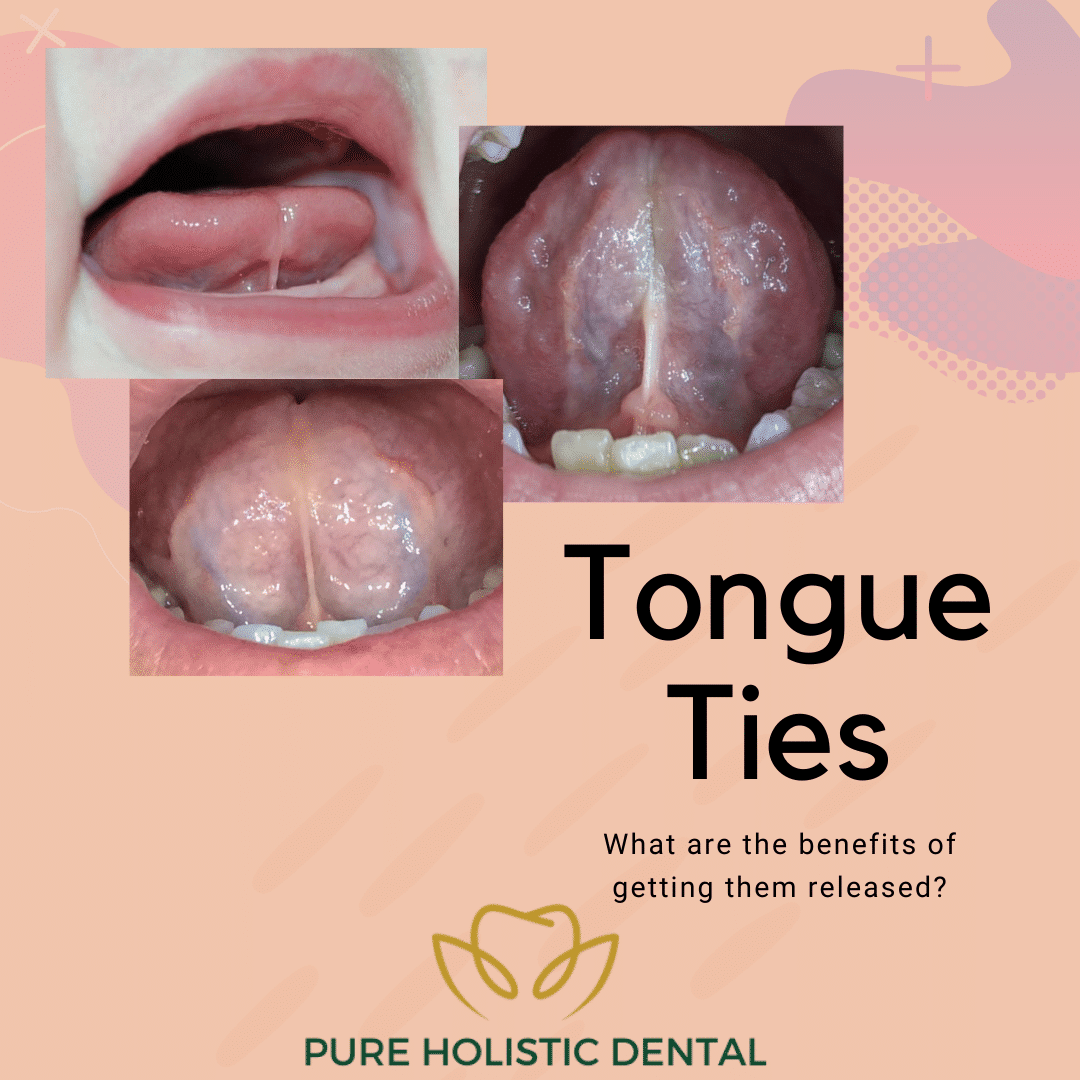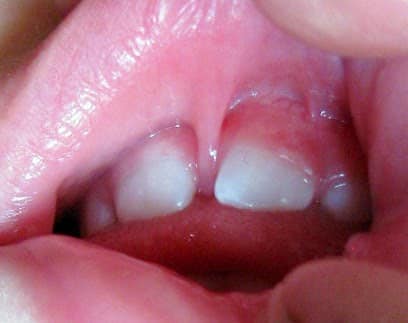Frenectomies & Tie Releases
At Pure Holistic Dental, our experienced doctors work alongside myofunctional therapists to loosen and remove ties occuring in the oral cavity. The scientific name for this type of procedure is “frenectomy”, which refers to the surgical release of any binding tissues on the body. We release tongue, lip, and buccal ties at our Sugar Land office.
What is a frenectomy?
Frenectomies are surgeries where any binding tissue in the body is cut or released. A frenectomy is performed when there is a severe limitation in range of motion and substantial benefit can be obtained from the procedure. In the dental world, the most common type of release is for a tongue tie. However, multiple ties can be present in the mouth including tongue, lip, and buccal ties. If present, each of these ties can create issues with speech, swallowing or eating, and breathing.

What are the different types of frenectomies in dentistry?
Tongue Ties (Lingual Ties)
- What is it?
- These are the most common type of tie that we see at Pure Holistic Dental. This type of tie occurs in the thin band of tissue that connects your tongue to the bottom of your mouth. When you stretch your tongue to the roof of your mouth, you will be able to feel the frenum under your tongue stretch. The technical term for this type of tie is ankyloglossia.
- Who does it Affect?
- Tongue ties can be found on adults and children alike. Tongue ties do not form over time. A person is either born with a tie or is not. The latest research shows that roughly 5% of all infants are born with a tongue tie. Tongue ties are more likely to occur in boys than girls?
- What are the consequences of a tie?
- In infants and children, the most common issue caused by a tongue tie is difficulty breast feeding. After the child is introduced to solids, parents may find that their child is more keen on eating some foods than others. In the case of tongue-tied children, this is likely because of the way their tongue is interacting with different textures inside their mouth. For example. They may not be able to push food pieces to the sides of their mouth to chew properly. Additionally, they may not be able to move food to the back of their mouths to swallow.
- In adults, if the tie is not resolved, the tongue tie may develop into problems for breathing or oxygen intake. As our bodies grow, the tied-down tongue may stop or block airflow into the bronchial tubes. Patients that have issues with this type of blockage experience the following symptoms.
- Snoring – Patients will subconsciously create a larger opening for intake of oxygen to compensate for the blocked airway
- Clenching/Grinding – Patients may experience teeth wear as a subconsious response due to repositioning of the jaw during sleep.
Lip Ties (Maxillary Ties)
- What is it?
- Lip ties typically occur on the upper lip, due to the thin piece of tissue that connects the lip to the gums. If a lip tie exists, the patient may see a continuously raised upper lip or a lip that is “Stuck” and doesn’t cover the upper teeth.
- Who does it Affect?
- Lip adhesion is less common than a tongue-tie and also develops prior to birth. There is no difference in patient profiles that are affected by this.
- What are the consequences of a tie?
- In infants and children, the most common issue caused by a tongue tie is difficulty breast feeding. The lip-tied infant will have difficulty latching to the breast and may intake more air or spill milk when eating.
- All patients affected by a lip tie will experience similar symptions. The patients usually present with difficulty speaking or eating. In young children, the tie will delay speech development and cause difficulty . By adulthood, most people have compensated for the difficulties caused for speech, and concern moves to aesthetics.

How are frenectomies fixed or revised?
At Pure Holistic Dental, we use a Carbon Dioxide (CO2) Laser to revise patients that are prescribed releases to their ties. This is usually done in combination with Myofunctional Therapy if pertaining to a tongue tie. The benefits of using a laser for the procedure are many. Read about them in detail.
- Reduce or Eliminate Pain from Scalpels & incisions
- Reduce or Eliminate need for Anaesthesia
- Faster Procedure with less trauma
- Speed up the Healing Process.
How do I know if I need a frenectomy?
If you’ve experienced any of the symptoms described above, you may be a good candidate for a frenectomy. The only way to know for sure is to visit a qualified dentist that can thoroughly evaluate your condition and create an individualized treatment plan. Schedule your appointment with our Doctors today.
Are we a good fit for you?
- You want to save time and money over your lifetime to get optimal health
- Your goal is to be the healthiest version of yourself to feel the best
- You want the least amount of dental work possible
